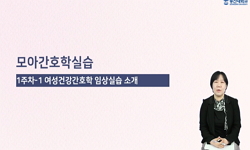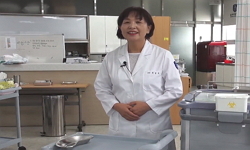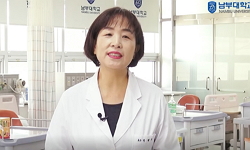Purpose: With the decrease in available clinical sites, a decrease in adequately prepared clinical faculty, and demand to prepare health care students to begin work, we need alternative methods to teach clinical skills for health care professionals. T...
http://chineseinput.net/에서 pinyin(병음)방식으로 중국어를 변환할 수 있습니다.
변환된 중국어를 복사하여 사용하시면 됩니다.
- 中文 을 입력하시려면 zhongwen을 입력하시고 space를누르시면됩니다.
- 北京 을 입력하시려면 beijing을 입력하시고 space를 누르시면 됩니다.
https://www.riss.kr/link?id=A100292421
- 저자
- 발행기관
- 학술지명
- 권호사항
-
발행연도
2011
-
작성언어
Korean
- 주제어
-
KDC
512
-
등재정보
KCI등재,SCOPUS
-
자료형태
학술저널
-
수록면
246-256(11쪽)
-
KCI 피인용횟수
64
- DOI식별코드
- 제공처
-
0
상세조회 -
0
다운로드
부가정보
다국어 초록 (Multilingual Abstract)
Purpose: With the decrease in available clinical sites, a decrease in adequately prepared clinical faculty, and demand to prepare health care students to begin work, we need alternative methods to teach clinical skills for health care professionals. The use of simulation as an educational process that can replicate clinical practices is becoming popular in nursing. Therefore, this study was conducted to review directions of simulation-based learning in nursing education. Methods: A systematic review of quantitative studies was undertaken using Medline, KERIS, and KISS. The primary search terms were simulation and nursing. Reference lists from relevant papers and the websites of relevant nursing organizations were also searched. Nine studies met inclusion criteria and were analyzed in detail. Results: All studies reported simulation as a valid teaching/learning strategy. Six of the studies (66.7%) showed that simulation technology was a practical and successful model to use in teaching a variety of clinical skills for nursing students and nurses. Conclusion: Simulation may have some advantages over other teaching methods, depending on the scenario, context, topic, and method. Further study is needed to determine the effect of team size on learning and to develop a universal method of outcome measurement.
참고문헌 (Reference)
1 이숙정, "호흡곤란환자 간호의 실습교육평가에서 Multi-mode와 SimManⓇ 시뮬레이션 활용 비교" 한국간호교육학회 16 (16): 51-60, 2010
2 이주희, "일 대학 간호대학생의 시뮬레이션 교육 경험 분석" 한국간호교육학회 15 (15): 183-193, 2009
3 송지호, "시뮬레이션을 이용한 간호학 임상실습교육의 방향" 2011
4 김해란, "시뮬레이션기반 응급간호교육을 받은 간호학생의 학업성취도와 자기효능감, 학습태도 및 수업만족도의 관계" 한국간호교육학회 17 (17): 5-13, 2011
5 김윤희, "시뮬레이션기반 심폐응급간호교육이 신규간호사의 지식, 임상수행능력 및 문제해결과정에 미치는 효과" 한국간호과학회 41 (41): 245-255, 2011
6 이우숙, "시뮬레이션 연계 문제중심학습이 간호학생의 간호기본역량에 미치는 효과" 기본간호학회 16 (16): 64-72, 2009
7 백지윤, "시뮬레이션 교육이 간호사의 전문심장소생술 수행능력에 미치는 효과" 연세대학교 대학원 2006
8 이선옥, "시뮬레이션 교육의 간호학 적용" 한국간호교육학회 13 (13): 90-94, 2007
9 양진주, "간호학생을 위한 시뮬레이션 기반 교육과정 개발 및 평가" 성인간호학회 20 (20): 548-560, 2008
10 정승은, "간호대학생의 시뮬레이션을 활용한 교육경험" 11 (11): 50-59, 2010
1 이숙정, "호흡곤란환자 간호의 실습교육평가에서 Multi-mode와 SimManⓇ 시뮬레이션 활용 비교" 한국간호교육학회 16 (16): 51-60, 2010
2 이주희, "일 대학 간호대학생의 시뮬레이션 교육 경험 분석" 한국간호교육학회 15 (15): 183-193, 2009
3 송지호, "시뮬레이션을 이용한 간호학 임상실습교육의 방향" 2011
4 김해란, "시뮬레이션기반 응급간호교육을 받은 간호학생의 학업성취도와 자기효능감, 학습태도 및 수업만족도의 관계" 한국간호교육학회 17 (17): 5-13, 2011
5 김윤희, "시뮬레이션기반 심폐응급간호교육이 신규간호사의 지식, 임상수행능력 및 문제해결과정에 미치는 효과" 한국간호과학회 41 (41): 245-255, 2011
6 이우숙, "시뮬레이션 연계 문제중심학습이 간호학생의 간호기본역량에 미치는 효과" 기본간호학회 16 (16): 64-72, 2009
7 백지윤, "시뮬레이션 교육이 간호사의 전문심장소생술 수행능력에 미치는 효과" 연세대학교 대학원 2006
8 이선옥, "시뮬레이션 교육의 간호학 적용" 한국간호교육학회 13 (13): 90-94, 2007
9 양진주, "간호학생을 위한 시뮬레이션 기반 교육과정 개발 및 평가" 성인간호학회 20 (20): 548-560, 2008
10 정승은, "간호대학생의 시뮬레이션을 활용한 교육경험" 11 (11): 50-59, 2010
11 대한간호협회, "간호교육제도현황"
12 Kardong-Edgren, S., "VitalSim versus SimMan: a comparison of BSN student test scores, knowledge retention, and satisfaction" 5 (5): e105-e111, 2009
13 Harder, B. N., "Use of simulation in teaching and learning in health sciences: A systematic review" 49 (49): 23-28, 2010
14 Bremner, M. N., "The use of human patient simulators: best practices with novice nursing students" 31 (31): 170-174, 2006
15 Cant, R. P., "Simulation-based learning in nurse education: systematic review" 66 (66): 3-15, 2010
16 Anderson, J. M., "Simulating extracorporeal membrane oxygenation emergencies to improve human performance. Part II: assessment of technical and behavioral skills" 1 (1): 228-232, 2006
17 고일선, "SimMan 시뮬레이션 학습 시나리오의 개발 및 학습 수행 평가 - 응급실 내원 천식 환자사례를 중심으로 -" 기본간호학회 17 (17): 371-381, 2010
18 Wadas, T. M. , "Role rehearsal: A mock code program" 18 (18): 36-39, 1999
19 Birch, L., "Nurse Educator" 27 (27): 915-22, 2007
20 김윤희, "MicroSimⓇ을 병용한 시뮬레이션기반 중환자간호교육의 운영 및 평가" 한국간호교육학회 16 (16): 24-32, 2010
21 Larew, C., "Innovations in clinical simulation: Application of Benner's theory in an interactive patient care simulation" 27 (27): 16-21, 2006
22 Rivera, T. M., "How effectively do you function in a cardiac arrest? A creative program approach to code skills" 26 (26): 226-229, 1995
23 Issenberg, S, B., "Features and uses of high-fidelity medical simulations that lead to effective learning: a BEME systematic review" 27 (27): 10-28, 2005
24 Durham, C. F., "Enhancing patient safety in nursing education through patient simulation"
25 Alinier, G., "Effectiveness of intermediate-fidelity simulation training technology in undergraduate nursing education" 54 (54): 359-369, 2006
26 Gibbons, S. W., "Clinical evaluation in advanced practice nursing education: using standardized patients in health assessment" 41 (41): 215-221, 2002
27 Granneman, S., "An evaluation of the effectiveness of competency-cased code blue education" 12 (12): 283-288, 1996
28 Cooper, J. B., "A brief history of the development of mannequin simulators for clinical education and training" 13 (13): 11-18, 2004
29 한국간호평가원, "2주기 간호교육 인증평가의 방향" 2009
30 한국간호평가원, "2주기 간호교육 인증평가 방안" 2010
동일학술지(권/호) 다른 논문
-
의사소통 훈련 집단프로그램이 간호대학생의 대인 의사소통과 인간관계에 미치는 효과
- 한국간호교육학회
- 신경아(Shin, Kyung Ah)
- 2011
- KCI등재,SCOPUS
-
간호학생의 전문직 자아개념과 전공만족과의 관계에서 자아존중감과 자기효능감의 조절효과
- 한국간호교육학회
- 김명숙(Kim, Myoung Sook)
- 2011
- KCI등재,SCOPUS
-
- 한국간호교육학회
- 정선영(Jung, Sun-Young)
- 2011
- KCI등재,SCOPUS
-
- 한국간호교육학회
- 조계화(Jo, Kae Hwa)
- 2011
- KCI등재,SCOPUS
분석정보
인용정보 인용지수 설명보기
학술지 이력
| 연월일 | 이력구분 | 이력상세 | 등재구분 |
|---|---|---|---|
| 2024 | 평가예정 | 계속평가 신청대상 (등재유지) | |
| 2019-01-01 | 평가 | 우수등재학술지 선정 (계속평가) | |
| 2016-01-01 | 평가 | 등재학술지 유지 (계속평가) |  |
| 2012-01-01 | 평가 | 등재학술지 유지 (등재유지) |  |
| 2009-01-01 | 평가 | 등재학술지 선정 (등재후보2차) |  |
| 2008-01-01 | 평가 | 등재후보 1차 PASS (등재후보1차) |  |
| 2006-01-01 | 평가 | 등재후보학술지 선정 (신규평가) |  |
학술지 인용정보
| 기준연도 | WOS-KCI 통합IF(2년) | KCIF(2년) | KCIF(3년) |
|---|---|---|---|
| 2016 | 2.49 | 2.49 | 2.81 |
| KCIF(4년) | KCIF(5년) | 중심성지수(3년) | 즉시성지수 |
| 2.87 | 3.05 | 3.548 | 0.42 |






 ScienceON
ScienceON DBpia
DBpia






